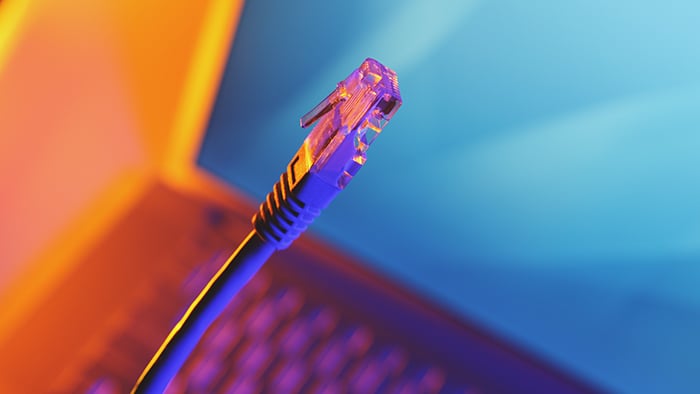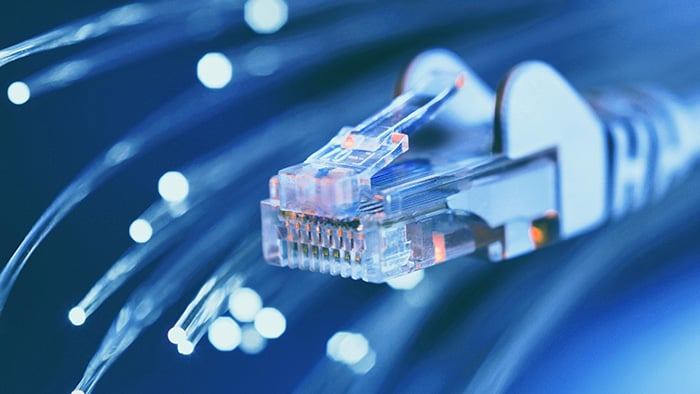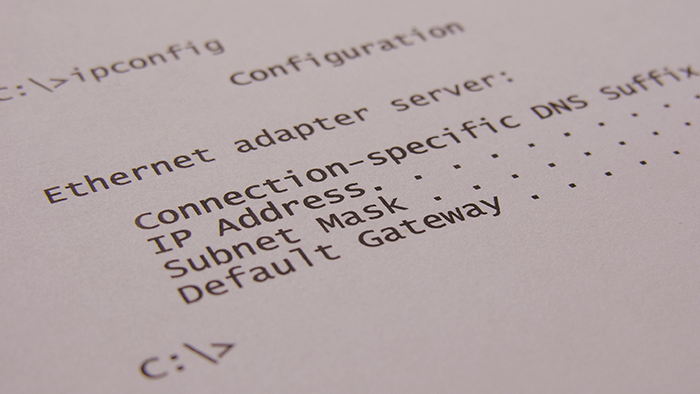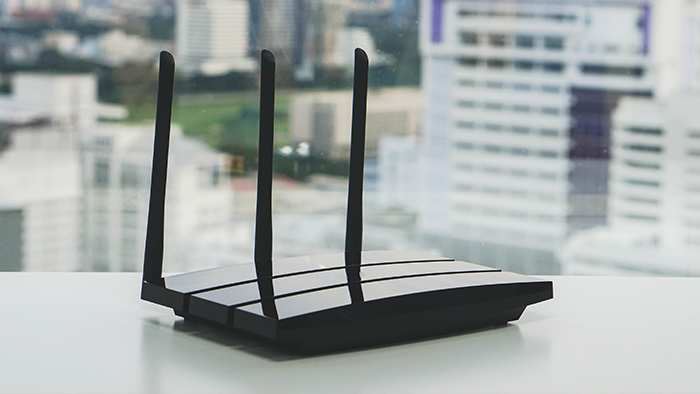TCP vs UDP: Differences between the protocols
The main difference between TCP (transmission control protocol) and UDP (user datagram protocol) is that TCP is a connection-based protocol and UDP is connectionless. While TCP is more reliable, it transfers data more slowly. UDP is less reliable but works more quickly. This makes each protocol suited to different types of data transfers.
Protocols are rules that govern how data is formatted and sent over a network. TCP and UDP are two different methods for doing the same job: transferring data via the internet. They enable servers and devices to communicate so you can send emails, watch Netflix, play games, and browse web pages.
TCP creates a secure communication line to ensure the reliable transmission of all data. Once a message is sent, the receipt is verified to make sure all the data was transferred.
UDP does not establish a connection when sending data. It sends data without confirming receipt or checking for errors. That means some or all of the data may be lost during transmission.
Here are the main differences between TCP and UDP:
|
Factor
|
TCP
|
UDP
|
|
Connection type
|
Requires an established connection before transmitting data
|
No connection is needed to start and end a data transfer
|
|
Data sequence
|
Can sequence data (send in a specific order)
|
Cannot sequence or arrange data
|
|
Data retransmission
|
Can retransmit data if packets fail to arrive
|
No data retransmitting. Lost data can’t be retrieved
|
|
Delivery
|
Delivery is guaranteed
|
Delivery is not guaranteed
|
|
Check for errors
|
Thorough error-checking guarantees data arrives in its intended state
|
Minimal error-checking covers the basics but may not prevent all errors
|
|
Broadcasting
|
Not supported
|
Supported
|
|
Speed
|
Slow, but complete data delivery
|
Fast, but at risk of incomplete data delivery
|
Which protocol is better: TCP or UDP?
It depends on what you’re doing online and the type of data being transferred. UDP is better if you’re gaming online, because its speedy data transfer allows for mostly lag-free gaming. TCP is better if you’re transferring files, like family photos, because it ensures the data arrives exactly as it was sent.
Overall, TCP and UDP are both useful protocols, so to think in terms of TCP vs UDP is a bit misleading. But depending on the type of data transfer, TCP or UDP might be better for the job. Here are some examples:
TCP is best for:
-
 Email or texting
Email or texting
-
 File transfers
File transfers
-
 Web browsing
Web browsing
UDP is best for:
-
 Live streaming
Live streaming
-
 Online gaming
Online gaming
-
 Video chat
Video chat
Here’s a detailed breakdown of the advantages and disadvantages of TCP and UDP:
 Advantages of TCP
Advantages of TCP
Transmission control protocol (TCP) is the protocol to choose for maximum reliability and quality. It may not be the fastest, but it gets the job done right. Here are a few advantages of the TCP protocol:
-
It sets up and maintains a connection between sender and receiver.
-
It operates independently of the operating system.
-
It supports many routing protocols.
-
It checks for errors, guaranteeing data arrives at its destination unaltered.
-
It confirms data arrival after delivery, or attempts to retransfer.
-
It’s able to send data in a particular sequence.
-
It optimizes the pace of data transmission based on the receiver.
 Disadvantages of TCP
Disadvantages of TCP
TCP isn’t suited for some types of data transfers, especially ones that require faster speeds. These are the drawbacks of TCP packet transmission:
-
It uses more bandwidth and is slower than UDP.
-
It’s especially slow at the beginning of a file transfer.
-
It can prevent data from loading if some data is lost. For example, it won’t load images on a web page until all of the page data has been delivered.
-
It reduces its transfer rate if the network is congested, resulting in even slower speeds.
-
It’s not suited for LAN and PAN networks.
-
It can’t multicast or broadcast.
Despite its slower speeds, TCP is the only protocol that can retransmit lost data packets. When reliability is critical, TCP is the best option.
 Applications of TCP
Applications of TCP
When should you enable TCP data transfer? Most data transfers automatically use the best protocol option. But in certain circumstances — such as when using a VPN — you may need to choose a protocol to optimize your browsing experience. Enable TCP for the following activities:
-
Email and text messaging
-
Streaming pre-recorded content on sites like Netflix, Hulu, or HBO Max
-
Transferring files between apps and devices
-
General web browsing
-
Remote device or network administration
 Advantages of UDP
Advantages of UDP
UDP delivers data rapidly, and it doesn’t slow down or turn back to recollect lost data. This makes it an ideal protocol for delivering continuous data or broadcasting, such as for live streaming, video calling, and matching servers with IP addresses. Here are some of the advantages of UDP:
-
No connection is needed to send or receive data, so apps and operating systems work faster.
-
Broadcast and multicast transmission is available, meaning one UDP transmission can send data to multiple recipients.
-
It endures packet loss, delivering data even if it's incomplete.
-
Smaller packet size and less overhead reduce end-to-end delay.
-
Operates over a larger range of network conditions than TCP.
-
UDP communication is more efficient.
-
It can transmit live and real-time data.
 Disadvantages of UDP
Disadvantages of UDP
While UDP provides the speed you need to live a comfortable digital life, UDP isn’t as reliable as TCP. This is something to be aware of when setting up a VPN, because most VPNs run on UDP protocols to keep connection speeds high. Here are some disadvantages of using UDP:
-
It’s connectionless, which makes data transfer unreliable.
-
There’s no system in place to acknowledge a successful data transfer.
-
There’s no way to know if data is delivered in its original state, or at all.
-
It has no error control, so it drops packets when errors are detected.
-
In case of a data collision, routers will often drop UDP packets and favor TCP packets.
-
Multiple users accepting UDP data can cause congestion, and there’s no way to mitigate this.
-
It cannot sequence data, so data can arrive in any order or out of order.
 Applications of UDP
Applications of UDP
UDP is best suited for transferring a steady flow of live data. This allows many users to access data easily and quickly, if not in perfect condition. A good example is playing an online game. UDP can keep the action moving in spite of potential errors or data loss. Here are a few applications of UDP in real life.
-
Online gaming
-
Multicasting
-
Video chatting/conferencing
-
VoIP (in-app voice calling)
-
Domain Name Systems (which translates domain names into IP addresses)
How does TCP work?
TCP works by using a “three-way handshake” — a three-step process that forms a connection between a device and a server. The completion of the three-step process establishes the non-stop connection, starts the transfer of data packets across the internet, delivers them intact, and acknowledges delivery.
Here’s how TCP works:
-
The client device initiating the data transfer sends a sequence number (SYN) to the server. It tells the server the number that the data packet transfer should begin with.
-
The server acknowledges the client SYN and sends its own SYN number. This step is often referred to as SYN-ACK (SYN acknowledgement).
-
The client then acknowledges (ACK) the server’s SYN-ACK, which forms a direct connection and begins the data transfer.
The connection between the sender and receiver is maintained until the transfer is successful. Every time a data packet is sent, it requires an acknowledgment from the receiver. So, if no acknowledgment is received, the data is resent.
If an error is acknowledged, the faulty packet is discarded and the sender delivers a new one. Heavy traffic or other issues may also prevent data from being sent. In that case, the transmission is delayed (without breaking the connection).Thanks to these controls, successful data delivery is guaranteed with TCP.
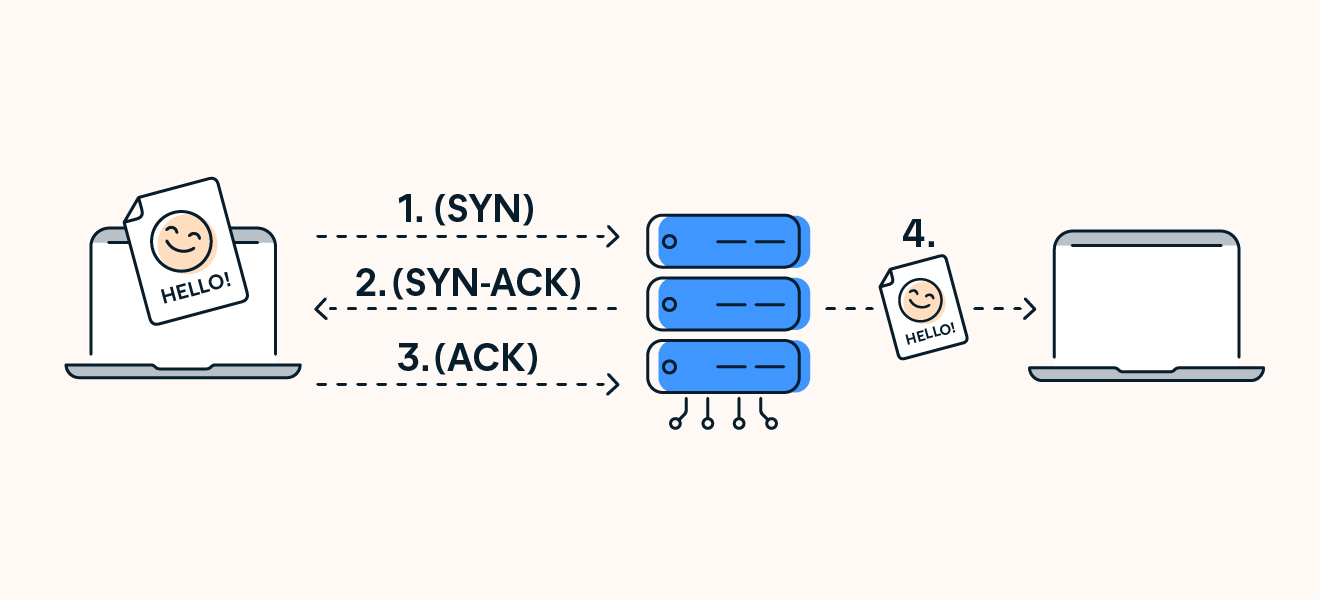 TCP uses a three-step process that forms (and keeps) a connection between a device and a server.
TCP uses a three-step process that forms (and keeps) a connection between a device and a server.
How does UDP work?
The UDP protocol works by immediately firing data at the receiver who made a data transmission request, until the transmission is complete or terminated. Sometimes called a “fire-and-forget” protocol, UDP fires data at a recipient in no particular sequence, without confirming delivery or checking if packets arrived as intended.
While TCP establishes a formal connection via its “handshake” agreement before sending data. UDP doesn’t have time for that. It speeds up data transfer by sending packets without making any agreement with a receiver. Then, it’s up to the recipient to make sense of the data.
 UDP works by rapid-firing data from sender to receiver until the transfer is completed or terminated.
UDP works by rapid-firing data from sender to receiver until the transfer is completed or terminated.
Here’s an analogy to help you understand how TCP and UDP work:
Imagine you’re having lunch at the office and a friend in a different cubicle asks you for half of your sandwich. You have two options: You can walk through the maze of office desks and hand it to her, guaranteeing a secure delivery. Or, you can throw the sandwich into her cubicle from across the room, leaving the quality of the delivery up to her speed and reflexes.
The first method (TCP) is reliable, but slow. The second method (UDP) is fast, but the sandwich might not arrive in its original state — or at all.
Use fast, reliable protocols with Avast SecureLine VPN
Whether you’re connected through TCP or UDP, you still need to protect your online privacy. Avast SecureLine VPN encrypts your internet connection for true digital privacy. It uses bank-grade encryption to hide your identity from ISPs, marketers, and other snoops trying to track your online activity. And, it connects using UDP to ensure the fastest speeds possible. No matter how you connect, secure all your data with Avast.
FAQ
What is TCP (transmission control protocol)?
The transmission control protocol (TCP) is one of the primary ways that data is transmitted across networks on the internet. It is a connection-oriented communication protocol that allows computing devices and applications to send data and verify delivery. Along with the user datagram protocol (UDP), TCP forms the foundation of global data transferring.
What is UDP (user datagram protocol)?
The user datagram protocol (UDP) is one of the protocols that enables data transfer across networks on the internet. It is a message-oriented communication protocol that allows computing devices and applications to send data without verifying delivery. UDP is best suited for real-time communication and broadcast systems.
What are three differences between TCP and UDP?
-
TCP requires a reliable connection between server and recipient, which can slow down data transfer. UDP is a connectionless protocol, therefore much quicker.
-
TCP guarantees flawless data delivery, even if lost or damaged packets are retransmitted. UDP is a “fire-and-forget” protocol that won’t check for errors or resend lost data packets.
-
UDP is better for broadcasting and live streaming. TCP is better for direct communication, like email, web browsing, or transferring files.
What are TCP and UDP used for?
TCP is best used for direct communication in which a reliable connection is needed, such as web browsing, email, text messaging, and file transfers. UDP is best used for live and real-time data transmission when speed is more important than reliability. UDP is normally used for online gaming, live streaming, and DNS protocols.
Are TCP ports different from UDP ports?
Yes, TCP and UDP ports are different, but they sometimes use the same port number. For example, UDP/53 and TCP/53 are both used for DNS, but they are different connection types. TCP ports comply with transmission control protocols, while UDP ports comply with user datagram protocols.
Is UDP the default for VPNs?
Generally, yes. VPN protocols (such as WireGuard) are often built on UDP protocols. This prevents your device from establishing direct connections across networks, and it’s ideal for streaming, gaming, and video chatting. For a more reliable connection while emailing and messaging, switch to TCP.
Is TCP better for VPNs than UDP?
TCP is the more reliable option when using a VPN, but UDP is better in certain instances. If you’re sending messages or transferring files, TCP is the best protocol to use with a VPN. TCP is also recommended for all VPN-secured web browsing. Because of its faster speeds, UDP is the better option for gaming on a VPN, live streaming, and VoIP.

 TCP uses a three-step process that forms (and keeps) a connection between a device and a server.
TCP uses a three-step process that forms (and keeps) a connection between a device and a server. UDP works by rapid-firing data from sender to receiver until the transfer is completed or terminated.
UDP works by rapid-firing data from sender to receiver until the transfer is completed or terminated.
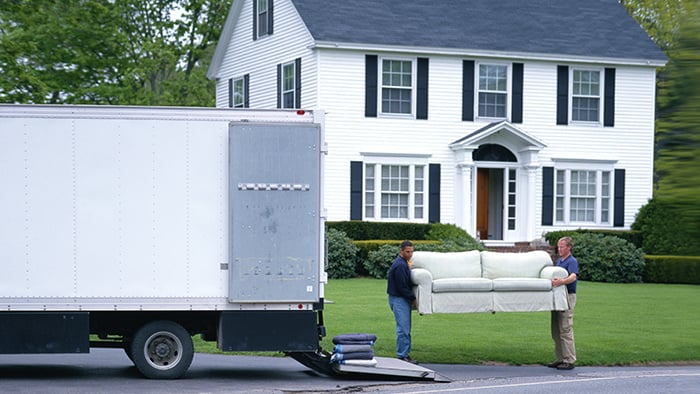

/Public-vs-local-IP-addresses-Thumb.jpg)
